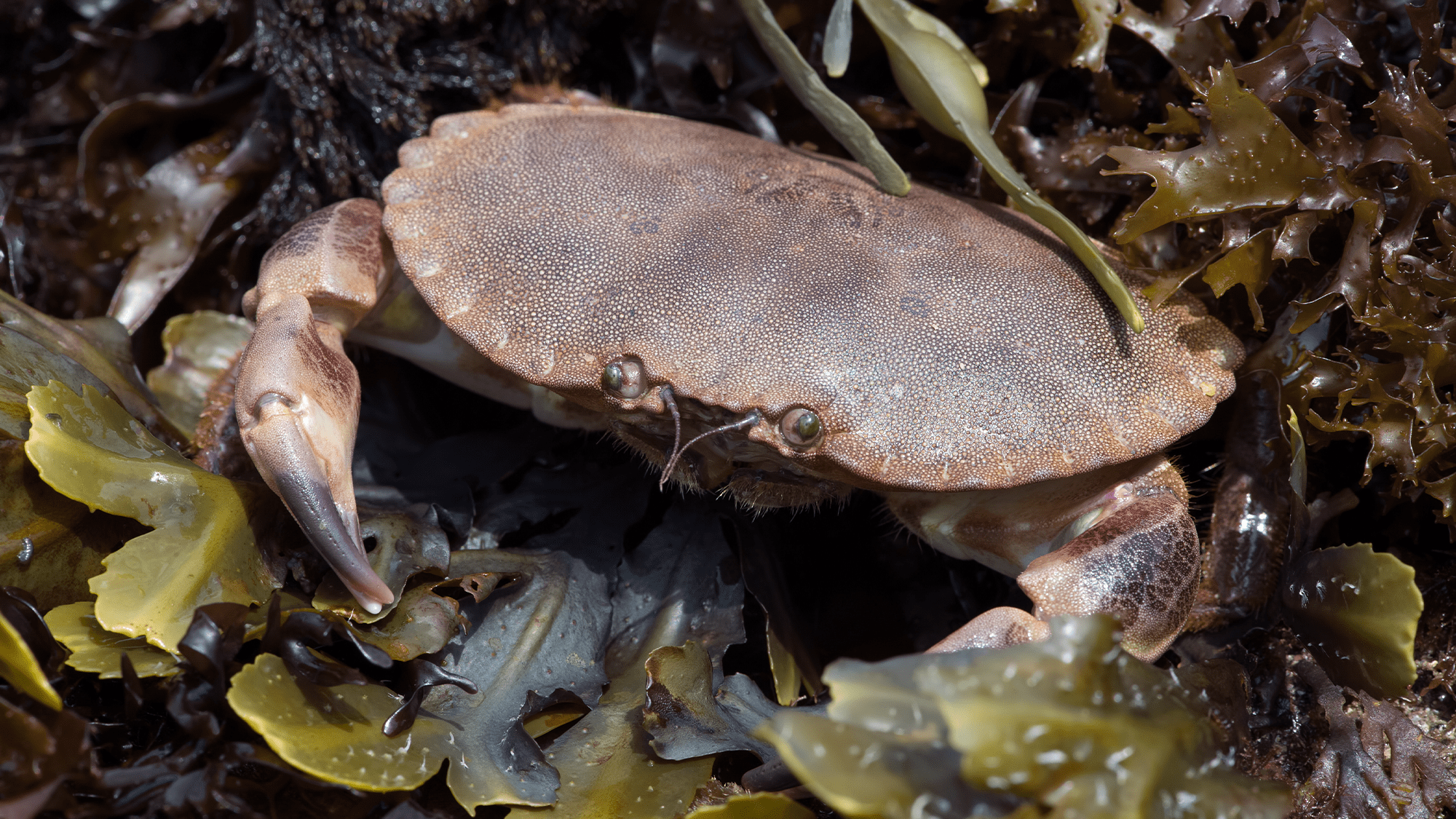

What types of food would be served at a Paleolithic Period buffet for Neanderthals? Fruits, plants, and nuts for sure, but the former inhabitants of Gruta de Figueira Brava in Portugal would have also expected lots of seafood, especially brown crab (Cancer pagurus).
“Neanderthals in Gruta da Figueira Brava were eating a lot of other marine resources, like limpets, mussels, clams, fish, as well as other terrestrial animals, such as deer, goats, aurochs and tortoises,” archaeologist Mariana Nabais from the Catalan Institute of Human Paleoecology and Social Evolution tells PopSci.
[Related: Skull research sheds light on human-Neanderthal interbreeding.]
Nabais specializes in zooarchaeology, or the study of animal remains that are found at archaeological sites. She is the lead author on a study published February 7 in the journal Frontiers in Environmental Archaeology that presents evidence that Nednderthals were cooking and eating crabs 90,000 years ago.
She and her team studied the deposits of stone tools, shells, and bones uncovered at Figueira Brava, south of the capital city of Lisbon. While they found a wide variety of shellfish in the deposits, remnants of brown crab were the most common in the deposits. Neanderthals possibly used low tide pools during the summer to harvest the crustaceans, according to the team.
Most of the crabs were adults which would yield roughly seven ounces of meat. “I was very surprised about the unexpected large amount of crab remains, and their large size, similar to those we eat today,” says Nabais.
The team looked at the patterns of damage on the crab’s shells and claws and did not find any marks from rodents or evidence that birds had broken into the shells. When looking for signs of butchery and percussion marks from tools, they found fracture patterns in the shells that indicate that the shells were intentionally broken up to access the meat.
[Related: Why everything eventually becomes a crab.]
Burns were found on about eight percent of the crab shells, indicating that Neanderthals were roasting the crabs in addition to harvesting them. Comparing the black burns on the shells with studies of other mollusks showed that the crabs were heated to 572 to 932 degrees Fahrenheit, a typical temperature for cooking.
“Our results add an extra nail to the coffin of the obsolete notion that Neanderthals were primitive cave dwellers who could barely scrape a living off scavenged big-game carcasses,” Nabais said in a statement.
According to Nabais, it is impossible to know why Neanderthals chose to harvest brown crabs or if they attached any significance to eating them, but consuming them would have given added nutritional benefits. This study was limited to observational and not experimental data, but another study Nabais’ co-authored has been submitted for publication and validated the inferences made in this paper.
“The origin and destiny of the Neanderthal lineage remains one of the key research questions addressed by paleoanthropology and paleolithic archaeology,” Nabais says. “Our research advances our knowledge of the Neanderthals, especially with regards to those who lived in southern Europe.”